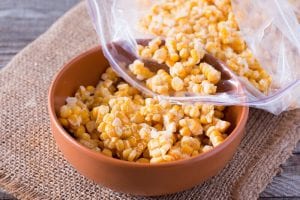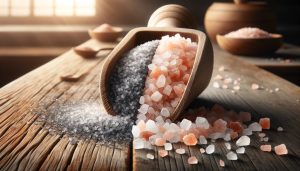
When choosing the right salt for your culinary and health needs, the debate often narrows down to Celtic salt versus sea salt. Each type boasts unique characteristics and benefits, making them favorites in different contexts. This article provides a comprehensive comparison to help you make an informed decision.
Origin and Production
Celtic salt, also known as Sel Gris (French for grey salt), is harvested using traditional methods in the Brittany region of France. The production process is labor-intensive, involving wooden rakes to gather salt crystals. This method ensures minimal processing and retains a high mineral content.
Sea salt is obtained by evaporating seawater. It is produced worldwide and comes in various forms, depending on the water source and techniques used. The process can range from completely natural evaporation in the sun to more rapid, industrial methods.
Texture and Color
The texture of Celtic salt is moist and chunky due to its high residual moisture, which also helps to retain its mineral richness. Its color can vary from grey to almost black, directly influenced by the clay from the salt flats where it is harvested.
In contrast, sea salt typically has a dryer, crystalline texture and can appear in various shades, from pure white to pink or gray, depending on the minerals and algae present in the water from which it is harvested.
Flavor Profile
Celtic salt is known for a subtle yet briny flavor, which is a direct result of its minimal processing and high mineral content. This makes it a favorite among chefs for finishing dishes.
Sea salt, with its straightforward salty taste, varies slightly based on the trace minerals and elements. The flavor can be more intense or milder, making it versatile for both cooking and finishing.
Nutritional Content
Both salts contain sodium chloride as their primary component, but the mineral content can differ significantly. Celtic salt is renowned for its trace minerals, including magnesium, calcium, and potassium, which are beneficial for health.
Sea salt also contains various minerals, but the specific content can vary widely depending on the source. Generally, it is considered slightly less mineral-rich than Celtic salt.
Culinary Uses
Celtic salt shines when used as a finishing salt because of its flavor and moisture, which helps it to cling to the surface of foods. It is ideal for salads, cooked fresh vegetables, and grilled meats.
Sea salt is more versatile due to its variety of grain sizes and its ability to blend easily into recipes. It’s used both for cooking and as a finishing salt, suitable for baking, sauces, and spice blends.
Health Implications
The health benefits of both salts are similar, due to their natural sourcing and minimal processing. However, Celtic salt’s higher trace mineral content might edge it slightly ahead, especially for those looking to supplement their diet with additional minerals.
Environmental Impact
Celtic salt’s traditional harvesting methods have a low environmental impact, preserving the ecosystems of the salt flats. These methods are sustainable, with little to no pollution associated with the harvesting process.
Sea salt production varies; natural methods have a minimal environmental impact, whereas industrial evaporation can use a lot of energy and contribute to pollution if not managed correctly.
Price and Accessibility
Celtic salt is often more expensive due to its labor-intensive harvesting techniques and import costs, especially if purchased outside of Europe.
Sea salt is more widely available and generally less costly than Celtic salt. It can be found in numerous forms and price points, making it accessible to a broader audience.
Conclusion
Choosing between Celtic salt and sea salt depends on personal preference, intended use, and budget. If you value a rich mineral profile and sustainable harvesting, Celtic salt may be the choice for you. If you need a versatile and economical option, sea salt might suit your needs better. Both options offer unique flavors and benefits that can enhance your cooking and support your health.











